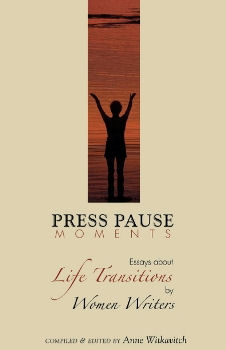
Adele Annesi is an award-winning editor and writer for global Web content and print publications. She worked as a development editor for Scholastic Publishing, and is a fiction and nonfiction book editor, specializing in nonfiction and memoir. As a press correspondent and columnist, Adele writes for newspapers, magazines, blogs and literary journals. Her stories have appeared in The Circle, The Fairfield Review, Hotmetalpress, Miranda Literary Magazine, TheNovelette.com,The Pittsburgh Quarterly, Trillium, the Italian-American literary journal Pyramid and an anthology for Fairfield University. She won Poetic Voices of America's editor's choice award, and presents the editing and writing workshops for libraries and other venues. She is a nominated member of Who's Who in the World, Who's Who in America and Who's Who in American Women. She's also working on a new novel. Visit her website at: Adele Annesi, Facebook, LinkedIn, Redroom, Twitter, and Word For Words. |
Beauty in the Breakdown:
|
|
My writers’ workshop recently examined one paragraph in the manuscript of a student’s novel. After we took the paragraph apart word-for-word, phrase-by-phrase and discussed each component and its potential function in the chapter and the novel as a whole, one student asked, “So, that means every word counts?” I considered the question for maybe a second. The answer is yes, every word counts. In today’s virtual world of largesse, many factors mitigate against this maxim—the surfeit of writing venues, lack of time, lack of scrutiny before content is uploaded for mass consumption, lack of knowledge of what makes for good writing, to name but a few. For writers serious about craft, that last factor is crucial—not so much in the sense of good grammar and punctuation, though these are essential, but in the sense of the writing as a whole. Learning to listen to and edit your work is one of the best and fastest ways to raise its quality. A good way to begin is to slow your reading pace, pondering your writing word-by-word. To start, select a paragraph—description and narrative work best—and as you read, consider how the phrase, sentence, and paragraph would read if you cut unnecessary words, reorder what remains, and substitute a more precise word or two for a phrase, even an entire sentence. Let’s see how this works. The paragraph below has a lovely voice that’s obscured by lack of order, repetition (especially the character’s name), self-conscious prose, and lack of clarity. The scene is confusing, too, because it’s part flashback and part present moment. An even subtler problem is that equally powerful words and phrases are fighting to one-up each other in an effort to push their concepts to the fore of the reader’s minds. The result is misplaced and confused emphasis. Each word and phrase is so charged with imagery, we can’t tell what’s important. These last two problems make it hard to see how the scene fits into and propels the story as a whole, in this case, a novel. Adrienne had spent the day at the Metropolitan Museum of Art. It had been a relief for Adrienne to wander through the echoing, cavernous rooms, finding peace and solace from the grinding friction of the city outside the museum’s thick stone walls. Adrienne thought about one painting in particular entitled Romantic Landscape. It was by the English landscape painter Thomas Gainsborough. The scene showed a tranquil valley in the foreground, unruffled by any breeze, leading the eye to a hazy mountain in the distance. Clouds filled the sky among the mountains. However, they were not threatening, not gray, only vaguely portentous. The clouds gave an unearthly sheen to the sky, casting the whole picture in a hue of luminescent serenity. The world in the painting dozed, as with half-closed eyes and oblivious to the storm that would rumble in later. Here’s a revised version: She had arrived at the Metropolitan early to wander the echoing rooms cloistered away from the grind of the city. She paused at Gainsborough’s oil, Romantic Landscape, of a secluded valley, mountains looming in the distance. Clouds filled the sky, weak sunlight casting an unearthly sheen and luminescent serenity where sheep grazed in the foreground, oblivious to the coming storm. |
To
go from the first example to
the second: Once the paragraph is cleared of verbal underbrush, we see the scene’s twofold purpose: to show Adrienne’s desire to escape and to foreshadow calamity. The best time to edit your work in this much detail is after Draft 1, where you’re still telling yourself the story. It could be in Draft 2—if you can juggle revision (wording), rewriting (scenes and characters), and restructuring (plot) all at the same time. Most likely, the best time for this drilldown is in Draft 3, after most of the heavy lifting has been done. Slowing your reading to hear and see each word, phrase, sentence, and paragraph for itself and the work as a whole is a great way to learn to write better. At this pace, you can listen to how the individual elements support and reveal character, dialogue, motif, theme and plot—how they work together, or don’t. And you’re teaching yourself. That’s a great way to always be learning—the price is right, too. To pose an editing query, contact Adele Annesi. To see my online writing workshop. Press Pause Moments: Essays About Life Transitions by Women Writers  |








